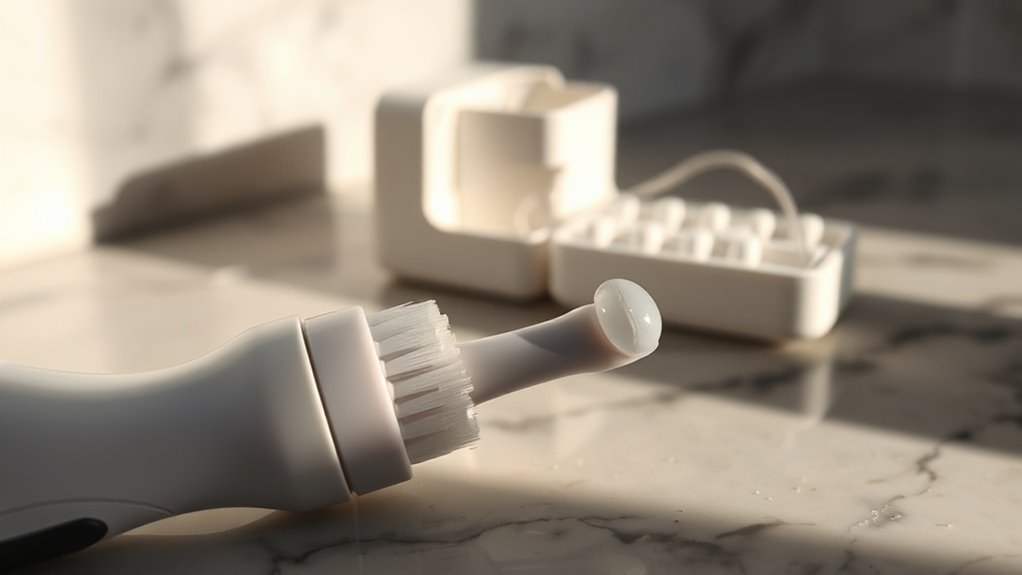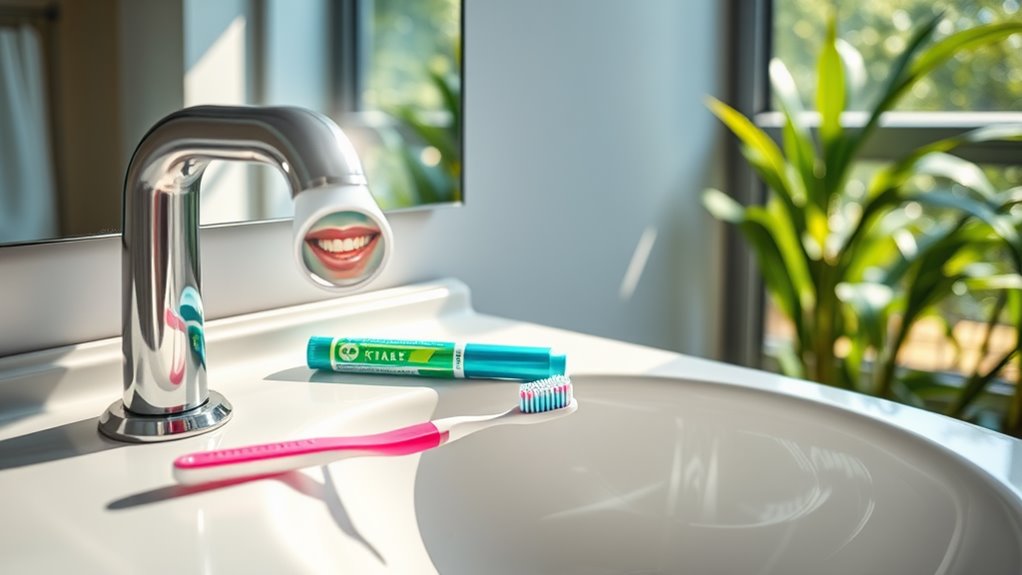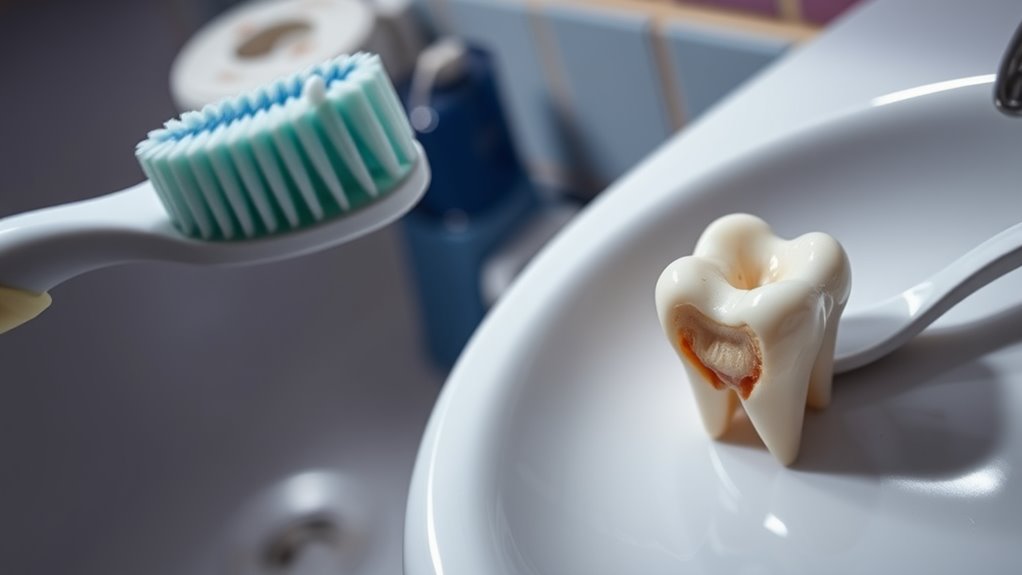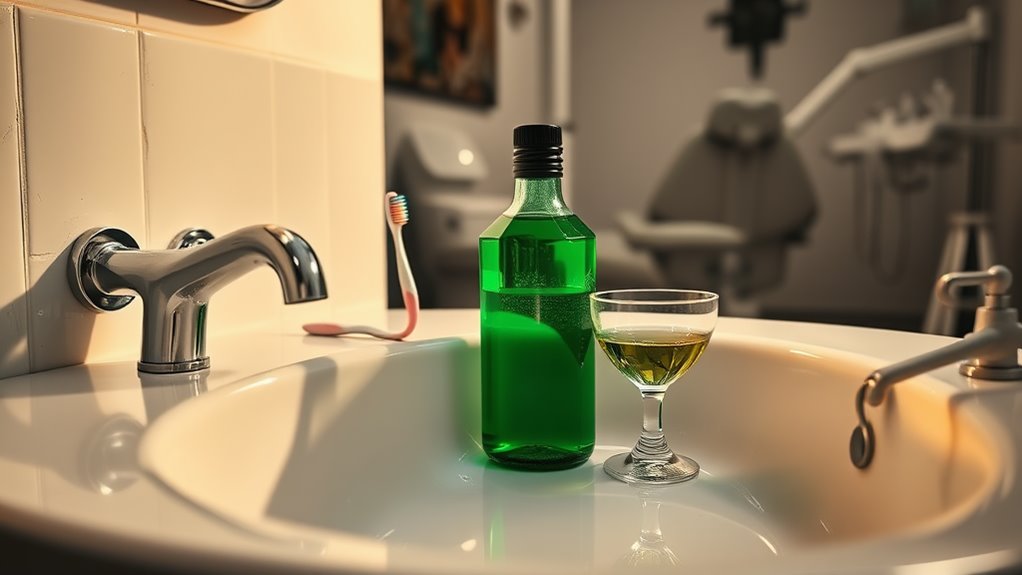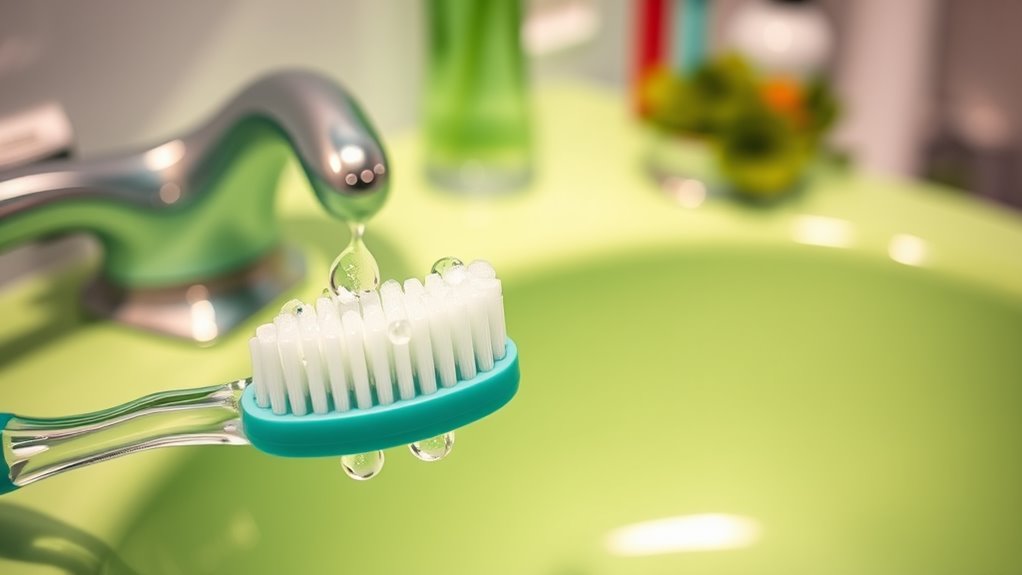Why Your Toothbrush Might Not Be Doing Enough
Most people underestimate how crucial their toothbrush technique can be in maintaining oral hygiene. You might think you’re brushing effectively, but incorrect grip or too much pressure can hinder cleaning. Plus, using a worn-out brush won’t get the job done either. Do you know how often you should replace your toothbrush or if you’re using the right one? Let’s explore these important factors that can make all the difference in your dental care routine.
Misconceptions About Toothbrush Effectiveness
Many people believe that simply using a toothbrush ensures optimal dental health, but that’s not always the case.
Misconceptions about toothbrush effectiveness can lead to inadequate oral care. For instance, folks might think that any brush will do, overlooking the importance of bristle type and regular replacement.
Understanding these nuances helps you enhance your dental hygiene routine and truly maximize your toothbrush’s effectiveness. Additionally, using soft-bristled toothbrushes is essential for protecting gums while effectively removing plaque.
The Importance of Proper Technique
Even with the right toothbrush, using proper technique is vital for effective oral care.
You should hold your brush at a 45-degree angle, gently moving it in circular motions to reach all surfaces.
Don’t forget to brush for at least two minutes and include your tongue.
Consistency in technique helps remove plaque, reducing the risk of cavities and gum disease. Additionally, it’s important to replace the toothbrush every three to four months to maintain optimal cleaning efficacy.
Choosing the Right Toothbrush for Your Needs
How do you know which toothbrush is right for you? Consider your specific needs, like dental sensitivity or braces.
Soft bristles are gentler on gums, while medium bristles offer more cleaning power.
Electric toothbrushes can improve plaque removal, but manual brushes are effective too.
Choose a comfortable handle that provides good grip, making it easier to maintain proper brushing technique. Additionally, it’s important to replace your toothbrush every 3-4 months to ensure effective cleaning and maintain oral hygiene.
The Role of Toothpaste in Oral Hygiene
Toothpaste plays a vital role in your oral hygiene routine, enhancing the effectiveness of your toothbrush and helping to remove plaque and prevent cavities.
Key benefits of using the right toothpaste include:
- Strengthening enamel with fluoride.
- Freshening breath with flavoring agents.
- Reducing sensitivity with specialized formulas.
- Fighting tartar buildup through antibacterial properties.
Incorporating fluoride is crucial because it can reduce cavities by up to 40%. Choose wisely for optimal oral health!
Common Mistakes That Reduce Cleaning Power
Using the right toothpaste can significantly enhance the effectiveness of your toothbrush, but even the best products can’t compensate for common mistakes that undermine your cleaning power.
Not brushing long enough or applying too much pressure can lead to ineffective cleaning. Additionally, neglecting to change your toothbrush regularly means worn bristles won’t clean effectively, reducing your oral hygiene’s overall impact. Furthermore, it’s important to use a soft-bristled toothbrush to prevent damage to your gums and enamel while cleaning.
Supplementary Tools for Enhanced Oral Care
While a good toothbrush is essential for maintaining oral hygiene, supplementary tools can significantly boost your cleaning routine.
Consider integrating these tools for optimal results:
- Dental Floss – Removes plaque and food particles between teeth.
- Mouthwash – Kills bacteria and freshens breath.
- Interdental Brushes – Clean hard-to-reach spaces effectively.
- Tongue Scraper – Reduces bacteria and improves breath.
These additions enhance your overall dental care.
